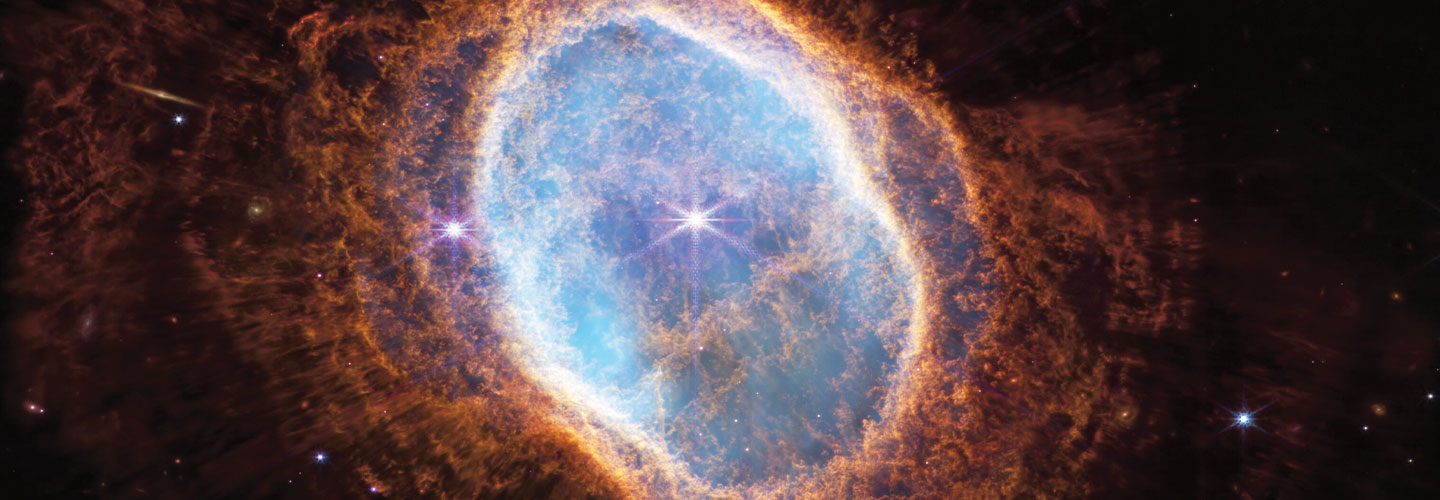This past July, NASA released a series of spectacular images. One showed a sea of sparkling stars shining through a craggy cloud of gas and dust. Another presented a trio of swirling galaxies, collections of gas, dust, and millions of stars and their solar systems. Yet another showed a dying star ringed by what looks like a fiery halo. These were the first full-color photos taken by the new James Webb Space Telescope—and the most-detailed snapshots of space ever seen. “Every image was just incredible and beyond what I had ever imagined,” says Stefanie Milam, a planetary scientist at NASA’s Goddard Space Flight Center in Maryland.
Milam is one of thousands of scientists, engineers, and technicians from around the world who helped create the Webb telescope. This $10 billion project took more than three decades of planning and preparation. That included figuring out how to fold the massive observatory like origami so it could fit inside a rocket. (To learn more about the creation of Webb, see "Portal to the Universe,” Science World, September 17, 2018.)
This past July, NASA released a series of stunning images. One showed a landscape of sparkling stars. They were shining through a craggy cloud of gas and dust. Another presented three swirling galaxies. Each holds millions of stars. And another showed what looks like a fiery halo around a dying star. These were the first full-color photos taken by the new James Webb Space Telescope. And they’re the most-detailed snapshots of space ever seen. “Every image was just incredible and beyond what I had ever imagined,” says Stefanie Milam. She’s a planetary scientist at NASA’s Goddard Space Flight Center in Maryland.
Milam helped create the Webb telescope. So did thousands of other scientists, engineers, and technicians around the world. This $10 billion project took more than three decades to plan and prepare. That included finding a way to put the massive observatory inside a rocket. It had to fold like origami to fit. (To learn more about the creation of Webb, see "Portal to the Universe,” Science World, September 17, 2018.)

